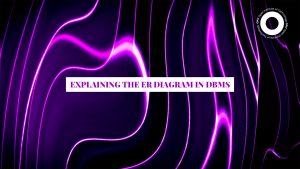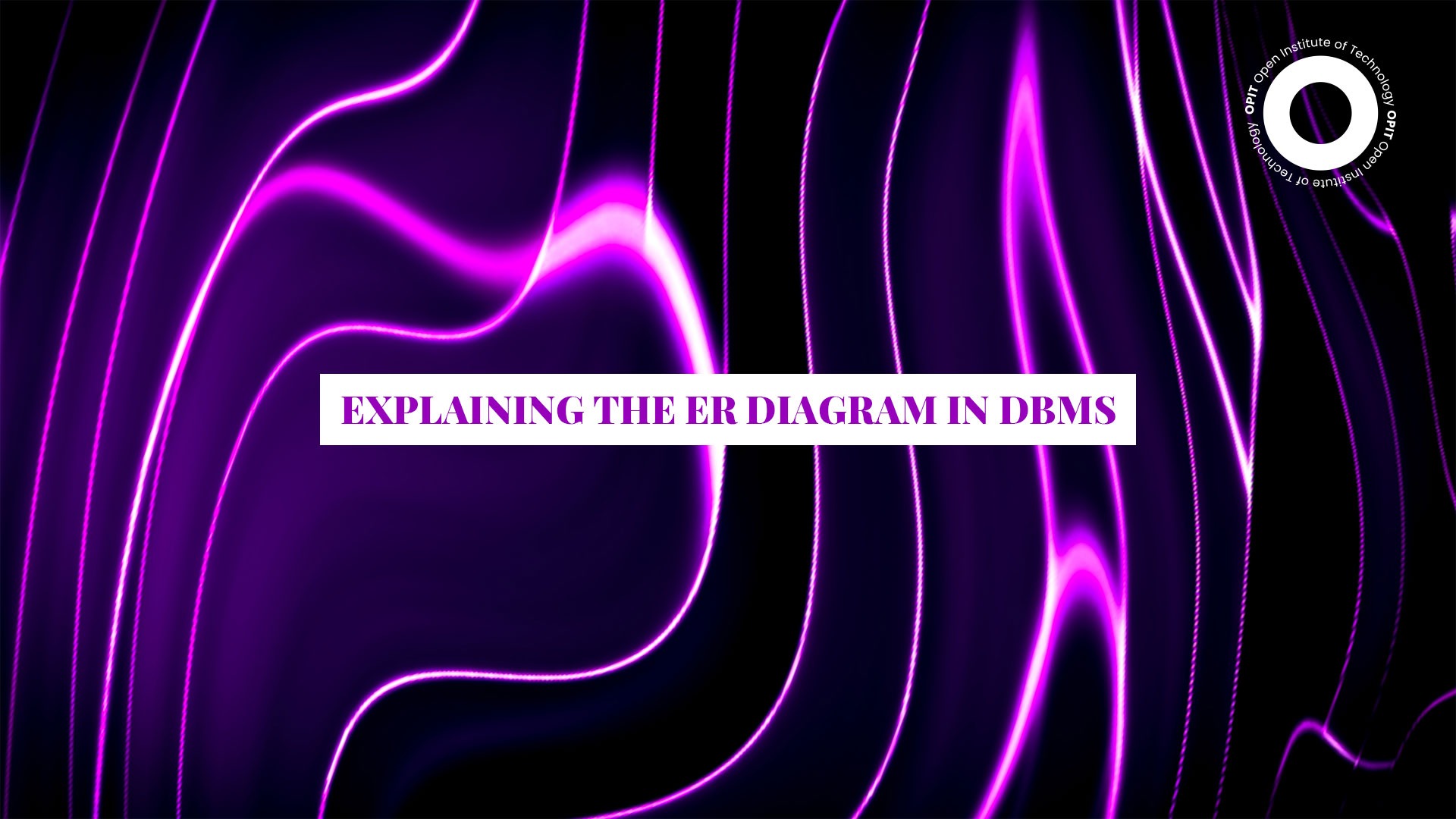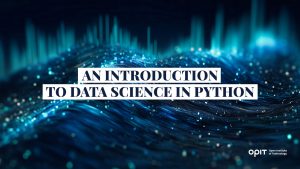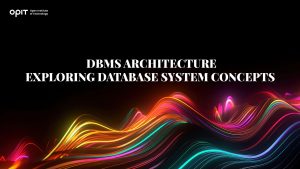

An ER diagram in DBMS (database management systems) is a lot like a storyboard for an animated TV show – it’s a collection of diagrams that show how everything fits together. Where a storyboard demonstrates the flow from one scene to the next, an ER diagram highlights the components of your databases and the relationships they share.
Understanding the ER model in DBMS is the first step to getting to grips with basic database software (like Microsoft Access) and more complex database-centric programming languages, such as SQL. This article explores ER diagrams in detail.
ER Model in DBMS
An ER diagram in DBMS is a tangible representation of the tables in a database, the relationships between each of those tables, and the attributes of each table. These diagrams feature three core components:
- Entities – Represented by rectangles in the diagram, entities are objects or concepts used throughout your database.
- Attributes – These are the properties that each entity possesses. ER diagrams use ellipses to represent attributes, with the attributes themselves tending to be the fields in a table. For example, an entity for students in a school’s internal database may have attributes for student names, birthdays, and unique identification numbers.
- Relationships – No entity in an ER diagram is an island, as each is linked to at least one other. These relationships can take multiple forms, with said relationships dictating the flow of information through the database.
Mapping out your proposed database using the ER model is essential because it gives you a visual representation of how the database works before you start coding or creating. Think of it like the blueprint you’d use to build a house, with that blueprint telling you where you need to lay every brick and fit every door.
Entities in DBMS
An Entity in DBMS tends to represent a real-life thing (like the students mentioned previously) that you can identify with certain types of data. Each entity is distinguishable from the others in your database, meaning you won’t have multiple entities listing student details.
Entities come in two flavors:
- Tangible Entities – These are physical things that exist in the real world, such as a person, vehicle, or building.
- Intangible Entities – If you can see and feel an entity, it’s intangible. Bank accounts are good examples. We know they exist (and have data attributed to them) but we can’t physically touch them.
There are also different entity strengths to consider:
- Strong Entities – A strong entity is represented using a rectangle and will have at least one key attribute attached to it that allows you to identify it uniquely. In the student example we’ve already shared, a student’s ID number could be a unique identifier, creating a key attribute that leads to the “Student” entity being strong.
- Weak Entities – Weak entities have no unique identifiers, meaning you can’t use them alone. Represented using double-outlined rectangles, these entities rely on the existence of strong entities to exist themselves. Think of it like the relationship between parent and child. A child can’t exist without a parent, in the same way that a weak entity can’t exist without a strong entity.
Once you’ve established what your entities are, you’ll gather each specific type of entity into an entity set. This set is like a table that contains the data for each entity in a uniform manner. Returning to the student example, any entity that has a student ID number, name, and birthdate, may be placed into an overarching “Student” entity set. They’re basically containers for specific entity types.
Attributes in DBMS
Every entity you establish has attributes attached to it, as you’ve already seen with the student example used previously. These attributes offer details about various aspects of the entity and come in four types:
- Simple Attributes – A simple attribute is any attribute that you can’t break down into further categories. A student ID number is a good example, as this isn’t something you can expand upon.
- Composite Attributes – Composite attributes are those that may have other attributes attached to them. If “Name” is one of your attributes, its composites could be “First Name,” “Surname,” “Maiden Name,” and “Nickname.”
- Derived Attributes – If you can derive an attribute from another attribute, it falls into this category. For instance, you can use a student’s date of birth to derive their age and grade level. These attributes have dotted ellipses surrounding them.
- Multi-valued Attributes – Represented by dual-ellipses, these attributes cover anything that can have multiple values. Phone numbers are good examples, as people can have several cell phone or landline numbers.
Attributes are important when creating an ER model in DBMS because they show you what types of data you’ll use to populate your entities.
Relationships in DBMS
As your database becomes more complex, you’ll create several entities and entity sets, with each having relationships with others. You represent these relationships using lines, creating a network of entities with line-based descriptions telling you how information flows between them.
There are three types of relationships for an ER diagram in DBMS:
- One-to-One Relationships – You’ll use this relationship when one entity can only have one of another entity. For example, if a school issues ID cards to its students, it’s likely that each student can only have one card. Thus, you have a one-to-one relationship between the student and ID card entities.
- One-to-Many Relationships – This relationship type is for when one entity can have several of another entity, but the relationship doesn’t work in reverse. Bank accounts are a good example, as a customer can have several bank accounts, but each account is only accessible to one customer.
- Many-to-Many Relationships – You use these relationships to denote when two entities can have several of each other. Returning to the student example, a student will have multiple classes, with each class containing several students, creating a many-to-many relationship.
These relationships are further broken down into “relationship sets,” which bring together all of the entities that participate in the same type of relationship. These sets have three varieties:
- Unary – Only one entity participates in the relationship.
- Binary – Two entities are in the relationship, such as the student and course example mentioned earlier.
- n-ary – Multiple entities participate in the relationship, with “n” being the number of entities.
Your ER diagram in DBMS needs relationships to show how each entity set relates to (and interacts with) the others in your diagram.
ER Diagram Notations
You’ll use various forms of notation to denote the entities, attributes, relationships, and the cardinality of those relationships in your ER diagram.
Entity Notations
Entities are denoted using rectangles around a word or phrase, with a solid rectangle meaning a strong entity and a double-outlined rectangle denoting a weak entity.
Attribute Notations
Ellipses are the shapes of choice for attributes, with the following uses for each attribute type:
- Simple and Composite Attribute – Solid line ellipses
- Derived Attribute – Dotted line ellipses
- Multi-Valued Attribute – Double-lined ellipses
Relationship Notations
Relationship notation uses diamonds, with a solid line diamond depicting a relationship between two attributes. You may also find double-lined diamonds, which signify the relationship between a weak entity and the strong entity that owns it.
Cardinality and Modality Notations
These lines show you the maximum times an instance in one entity set can relate to the instances of another set, making them crucial for denoting the relationships inside your database.
The endpoint of the line tells you everything you need to know about cardinality and ordinality. For example, a line that ends with three lines (two going diagonally) signifies a “many” cardinality, while a line that concludes with a small vertical line signifies a “one” cardinality. Modality comes into play if there’s a minimum number of instances for an entity type. For example, a person can have many phone numbers but must have at least one.
Steps to Create an ER Diagram in DBMS
With the various notations for an ER diagram in DBMS explained, you can follow these steps to draw your own diagram:
- Identify Entities – Every tangible and intangible object that relates to your database is an entity that you need to identify and define.
- Identify Attributes – Each entity has a set of attributes (students have names, ID numbers, birthdates, etc.) that you must define.
- Identify Relationships – Ask yourself how each entity set fits together to identify the relationships that exist between them.
- Assign Cardinality and Modality – If you have an instance from Entity A, how many instances does it relate to in Entity B? Is there a minimum to consider? Assign cardinalities and modalities to offer the answers.
- Finalize Your Diagram – Take a final pass over the diagram to ensure all required entities are present, they have the appropriate attributes, and that all relationships are defined.
Examples of ER Diagrams in DBMS
Once you understand the basics of the ER model in DBMS, you’ll see how they can apply to multiple scenarios:
- University Databases – A university database will have entities such as “Student,” “Teacher,” “Course,” and “Class.” Attributes depend on the entity, with the people-based entities having attributes including names, dates of birth, and ID numbers. Relationships vary (i.e., a student may only have one teacher but a single teacher may have several students).
- Hospital Management Databases – Entities for this type of database include people (“Patients,” “Doctors,” and “Nurses”), as well as other tangibles, such as different hospital buildings and inventory. These databases can get very complex, with multiple relationships linking the various people involved to different buildings, treatment areas, and inventory.
- E-Commerce Databases – People play an important role in the entities for e-commerce sites, too, because every site needs a list of customers. Those customers have payment details and order histories, which are potential entities or attributes. Product lists and available inventory are also factors.
Master the ER Model in DBMS
An ER diagram in DBMS can look like a complicated mass of shapes and lines at first, making them feel impenetrable to those new to databases. But once you get to grips with what each type of shape and line represents, they become crucial tools to help you outline your databases before you start developing them.
Application of what you’ve learned is the key to success with ER diagrams (and any other topic), so take what you’ve learned here and start experimenting. Consider real-world scenarios (such as those introduced above) and draw diagrams based on the entities you believe apply to those scenarios. Build up from there to figure out the attributes and relationships between entity sets and you’re well on your way to a good ER diagram.
Related posts

Source:
- Agenda Digitale, published on November 25th, 2025
In recent years, the word ” sustainability ” has become a firm fixture in the corporate lexicon. However, simply “doing no harm” is no longer enough: the climate crisis , social inequalities , and the erosion of natural resources require a change of pace. This is where the net-positive paradigm comes in , a model that isn’t content to simply reduce negative impacts, but aims to generate more social and environmental value than is consumed.
This isn’t about philanthropy, nor is it about reputational makeovers: net-positive is a strategic approach that intertwines economics, technology, and corporate culture. Within this framework, digitalization becomes an essential lever, capable of enabling regenerative models through circular platforms and exponential technologies.
Blockchain, AI, and IoT: The Technological Triad of Regeneration
Blockchain, Artificial Intelligence, and the Internet of Things represent the technological triad that makes this paradigm shift possible. Each addresses a critical point in regeneration.
Blockchain guarantees the traceability of material flows and product life cycles, allowing a regenerated dress or a bottle collected at sea to tell their story in a transparent and verifiable way.
Artificial Intelligence optimizes recovery and redistribution chains, predicting supply and demand, reducing waste and improving the efficiency of circular processes .
Finally, IoT enables real-time monitoring, from sensors installed at recycling plants to sharing mobility platforms, returning granular data for quick, informed decisions.
These integrated technologies allow us to move beyond linear vision and enable systems in which value is continuously regenerated.
New business models: from product-as-a-service to incentive tokens
Digital regeneration is n’t limited to the technological dimension; it’s redefining business models. More and more companies are adopting product-as-a-service approaches , transforming goods into services: from technical clothing rentals to pay-per-use for industrial machinery. This approach reduces resource consumption and encourages modular design, designed for reuse.
At the same time, circular marketplaces create ecosystems where materials, components, and products find new life. No longer waste, but input for other production processes. The logic of scarcity is overturned in an economy of regenerated abundance.
To complete the picture, incentive tokens — digital tools that reward virtuous behavior, from collecting plastic from the sea to reusing used clothing — activate global communities and catalyze private capital for regeneration.
Measuring Impact: Integrated Metrics for Net-Positiveness
One of the main obstacles to the widespread adoption of net-positive models is the difficulty of measuring their impact. Traditional profit-focused accounting systems are not enough. They need to be combined with integrated metrics that combine ESG and ROI, such as impact-weighted accounting or innovative indicators like lifetime carbon savings.
In this way, companies can validate the scalability of their models and attract investors who are increasingly attentive to financial returns that go hand in hand with social and environmental returns.
Case studies: RePlanet Energy, RIFO, and Ogyre
Concrete examples demonstrate how the combination of circular platforms and exponential technologies can generate real value. RePlanet Energy has defined its Massive Transformative Purpose as “Enabling Regeneration” and is now providing sustainable energy to Nigerian schools and hospitals, thanks in part to transparent blockchain-based supply chains and the active contribution of employees. RIFO, a Tuscan circular fashion brand, regenerates textile waste into new clothing, supporting local artisans and promoting workplace inclusion, with transparency in the production process as a distinctive feature and driver of loyalty. Ogyre incentivizes fishermen to collect plastic during their fishing trips; the recovered material is digitally tracked and transformed into new products, while the global community participates through tokens and environmental compensation programs.
These cases demonstrate how regeneration and profitability are not contradictory, but can actually feed off each other, strengthening the competitiveness of businesses.
From Net Zero to Net Positive: The Role of Massive Transformative Purpose
The crucial point lies in the distinction between sustainability and regeneration. The former aims for net zero, that is, reducing the impact until it is completely neutralized. The latter goes further, aiming for a net positive, capable of giving back more than it consumes.
This shift in perspective requires a strong Massive Transformative Purpose: an inspiring and shared goal that guides strategic choices, preventing technology from becoming a sterile end. Without this level of intentionality, even the most advanced tools risk turning into gadgets with no impact.
Regenerating business also means regenerating skills to train a new generation of professionals capable not only of using technologies but also of directing them towards regenerative business models. From this perspective, training becomes the first step in a transformation that is simultaneously cultural, economic, and social.
The Regenerative Future: Technology, Skills, and Shared Value
Digital regeneration is not an abstract concept, but a concrete practice already being tested by companies in Europe and around the world. It’s an opportunity for businesses to redefine their role, moving from mere economic operators to drivers of net-positive value for society and the environment.
The combination of blockchain, AI, and IoT with circular product-as-a-service models, marketplaces, and incentive tokens can enable scalable and sustainable regenerative ecosystems. The future of business isn’t just measured in terms of margins, but in the ability to leave the world better than we found it.

Source:
- Raconteur, published on November 06th, 2025
Many firms have conducted successful Artificial Intelligence (AI) pilot projects, but scaling them across departments and workflows remains a challenge. Inference costs, data silos, talent gaps and poor alignment with business strategy are just some of the issues that leave organisations trapped in pilot purgatory. This inability to scale successful experiments means AI’s potential for improving enterprise efficiency, decision-making and innovation isn’t fully realised. So what’s the solution?
Although it’s not a magic bullet, an AI operating model is really the foundation for scaling pilot projects up to enterprise-wide deployments. Essentially it’s a structured framework that defines how the organisation develops, deploys and governs AI. By bringing together infrastructure, data, people, and governance in a flexible and secure way, it ensures that AI delivers value at scale while remaining ethical and compliant.
“A successful AI proof-of-concept is like building a single race car that can go fast,” says Professor Yu Xiong, chair of business analytics at the UK-based Surrey Business School. “An efficient AI technology operations model, however, is the entire system – the processes, tools, and team structures – for continuously manufacturing, maintaining, and safely operating an entire fleet of cars.”
But while the importance of this framework is clear, how should enterprises establish and embed it?
“It begins with a clear strategy that defines objectives, desired outcomes, and measurable success criteria, such as model performance, bias detection, and regulatory compliance metrics,” says Professor Azadeh Haratiannezhadi, co-founder of generative AI company Taktify and professor of generative AI in cybersecurity at OPIT – the Open Institute of Technology.
Platforms, tools and MLOps pipelines that enable models to be deployed, monitored and scaled in a safe and efficient way are also essential in practical terms.
“Tools and infrastructure must also be selected with transparency, cost, and governance in mind,” says Efrain Ruh, continental chief technology officer for Europe at Digitate. “Crucially, organisations need to continuously monitor the evolving AI landscape and adapt their models to new capabilities and market offerings.”
An open approach
The most effective AI operating models are also founded on openness, interoperability and modularity. Open source platforms and tools provide greater control over data, deployment environments and costs, for example. These characteristics can help enterprises to avoid vendor lock-in, successfully align AI to business culture and values, and embed it safely into cross-department workflows.
“Modularity and platformisation…avoids building isolated ‘silos’ for each project,” explains professor Xiong. “Instead, it provides a shared, reusable ‘AI platform’ that integrates toolchains for data preparation, model training, deployment, monitoring, and retraining. This drastically improves efficiency and reduces the cost of redundant work.”
A strong data strategy is equally vital for ensuring high-quality performance and reducing bias. Ideally, the AI operating model should be cloud and LLM agnostic too.
“This allows organisations to coordinate and orchestrate AI agents from various sources, whether that’s internal or 3rd party,” says Babak Hodjat, global chief technology officer of AI at Cognizant. “The interoperability also means businesses can adopt an agile iterative process for AI projects that is guided by measuring efficiency, productivity, and quality gains, while guaranteeing trust and safety are built into all elements of design and implementation.”
A robust AI operating model should feature clear objectives for compliance, security and data privacy, as well as accountability structures. Richard Corbridge, chief information officer of Segro, advises organisations to: “Start small with well-scoped pilots that solve real pain points, then bake in repeatable patterns, data contracts, test harnesses, explainability checks and rollback plans, so learning can be scaled without multiplying risk. If you don’t codify how models are approved, deployed, monitored and retired, you won’t get past pilot purgatory.”
Of course, technology alone can’t drive successful AI adoption at scale: the right skills and culture are also essential for embedding AI across the enterprise.
“Multidisciplinary teams that combine technical expertise in AI, security, and governance with deep business knowledge create a foundation for sustainable adoption,” says Professor Haratiannezhadi. “Ongoing training ensures staff acquire advanced AI skills while understanding associated risks and responsibilities.”
Ultimately, an AI operating model is the playbook that enables an enterprise to use AI responsibly and effectively at scale. By drawing together governance, technological infrastructure, cultural change and open collaboration, it supports the shift from isolated experiments to the kind of sustainable AI capability that can drive competitive advantage.
In other words, it’s the foundation for turning ambition into reality, and finally escaping pilot purgatory for good.
Have questions?
Visit our FAQ page or get in touch with us!
Write us at +39 335 576 0263
Get in touch at hello@opit.com
Talk to one of our Study Advisors
We are international
We can speak in:


